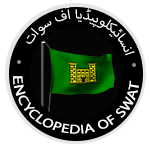
Major Henry George Raverty’s brief work with the title, ‘An account of Upper and Lower Suwat, and the Kohistan, to the source of the Suwat River; with an account of the tribes inhabiting those valleys’ was published in the Journal of the Asiatic Society of Bengal (Volume XXXI, No.I. To V. 1862) Calcutta in the year 1862. That work of Major Raverty is produced here on this website for the interest of the readers and research scholars. Raverty wrote: (PART 11)
What has been said with regard to thieves, robbers, and murderers from the British territory fleeing to the Akhund, and being entertained by him, is as false as the other matters which have been advanced against him, and which those, who have, probably, cast their greedy eyes upon the Suwat valley, with the view of getting it annexed, not considering that we could not keep it, but at great expense and bloodshed, take care to spread. In all countries bordering upon each other, the criminals on either side seek to escape from justice by flying across the respective frontiers, as they did from England to Scotland, and vice versa, in former times; and as they do to France and America, in the present day. It is not to be imagined, on this account, that the authorities of those countries connive at such acts, much less the bishops and priests of those countries. Such too is the case in Suwat. The Akhund is high priest or rather a devotee, whom the people regard as a saint, and who is looked upon, by the people of those extensive regions around, as the head of their religion ; but he is without the slightest real power, either temporal or spiritual; his influence being solely through the respect in which he is held.
It is in the villages on the outskirts of Suwat, and other places on the border, that bad characters, who have fled from justice, seek shelter, with whom the Akhund, as already stated, has no more to do than the man in the moon; but parties, for their own purposes, make use of the Akhund’s name.
The Suwati Afghans are so tyrannical, so prejudiced, and so fanatical, that even the admonitions, and the expostulations of the Akhund are unpalatable to them. Whatever they do not like, or whatever may be against the custom of their Afghan nature from time immemorial, they will neither listen, nor attend to. A circumstance which lately happened is a proof of this. A trader of Peshawar, after great expense of time and money, had caused to be felled, in the hilly district above Suwat, about two thousand pine trees, which, in their rough state, were thrown into the river, for the purpose of being floated down to Peshawar. When the trader and his people, with their rafts, entered the Suwat boundary, the Suwatis seized them, and would not allow the rafts to proceed. The trader supposing the Akhund to have influence, went and complained to him. The Suwatis of Lower Suwat, through fear of their chiefs, with whom the Akhund had expostulated about the behaviour of their people, gave up all the trees they had not made use of themselves, and they were not many ; but the people of Upper Suwat, that is to say, from Charbagh to Chur-rraey, on both sides of the river, would not obey, and did not; and the trees may still be seen, lying about in hundreds, on the river’s banks.
With the exception of a few servants, the Akhund, whose name is Abd-ul-ghaffur, has no followers whatever. He is of the Naikbi Khel (the Naikpee Khail of Elphinstone,) and left Suwat when a mere child. He resided in the Khattak country, at Sarae, at the ziarat or shrine of Shaykh Pam-Kar, where he remained as a student of theology until past his thirtieth year ; and was so abstinent that it is said he could scarcely walk a hundred yards from weakness. This I heard from Muhammad Afzal Khan, Khattak, who has often seen him there. When the Seikhs got the upper hand at Peshawar, he left the Khushal country and returned to Suwat, and took up his residence at Saiydugan.
I noticed that the Akhund’s head shook a little, which unless cured, will probably turn to the disease name lakwah in Arabic, which is a spasmodic distortion of the face.
Reference (Source Details):
‘An account of Upper and Lower Suwat, and the Kohistan, to the source of the Suwat River; with an account of the tribes inhabiting those valleys’ was published in the Journal of the Asiatic Society of Bengal (Volume XXXI, No.I. To V. 1862) Calcutta, pages 242-244.









Comment here